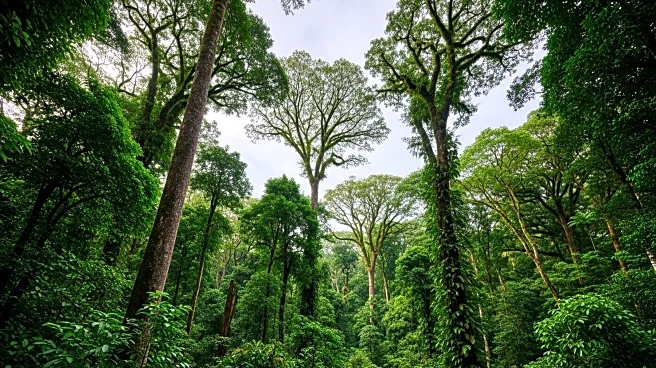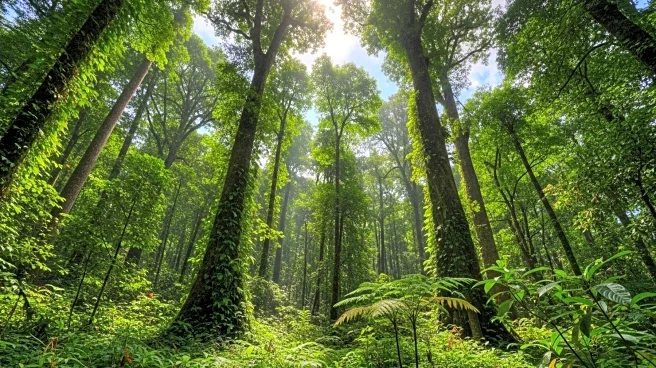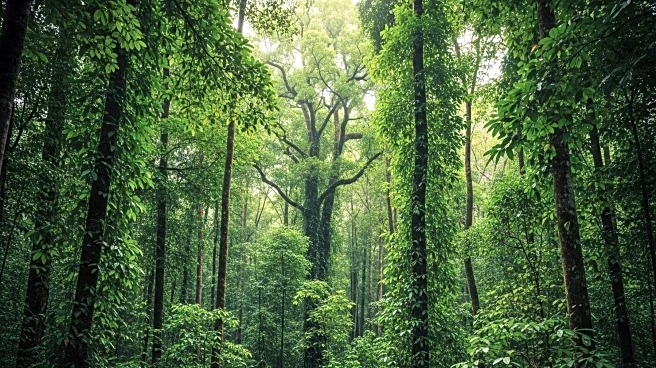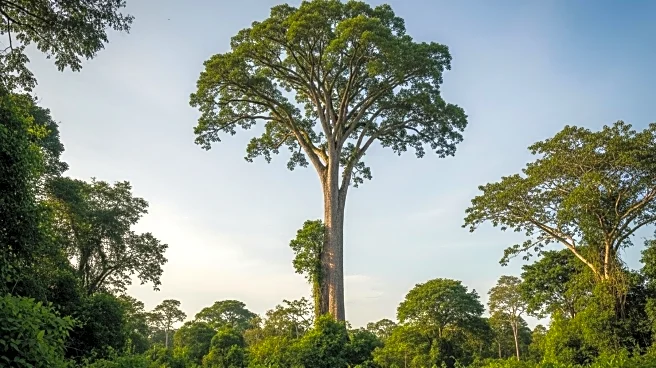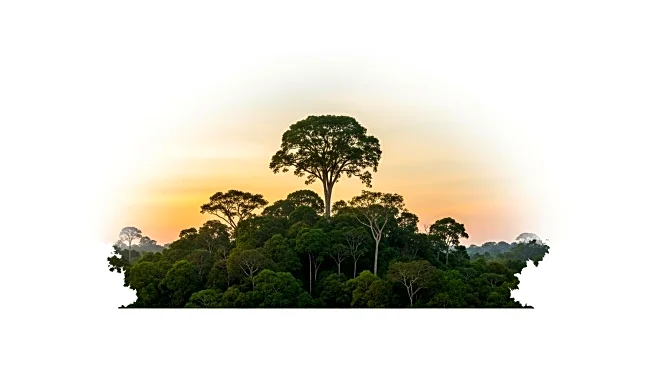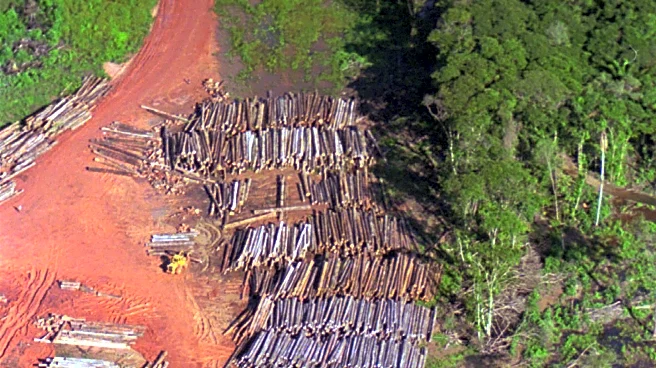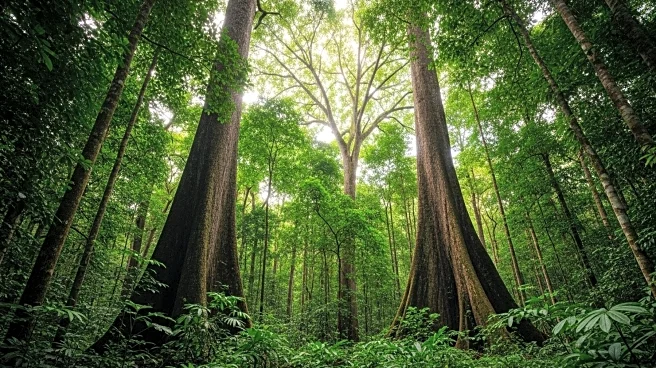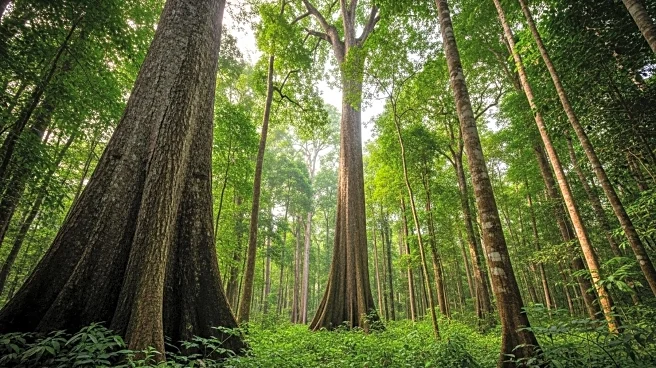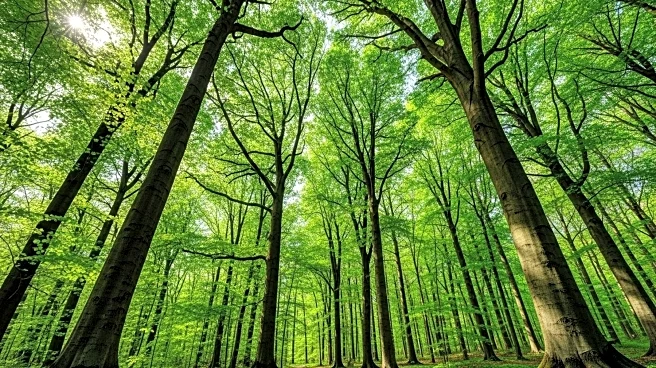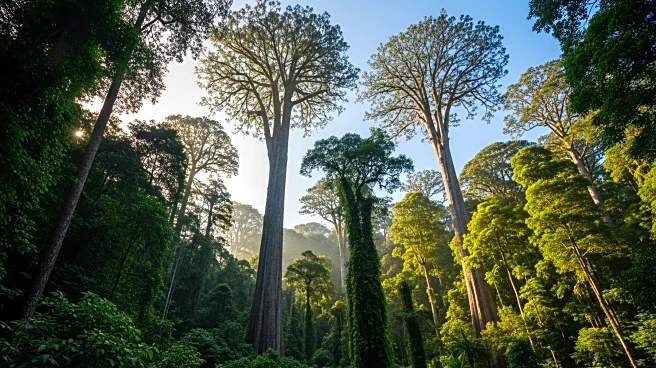What's Happening?
A recent study has revealed that the largest trees in the Amazon rainforest are growing and increasing in number, attributed to rising carbon dioxide levels in the atmosphere. Conducted by nearly 100 researchers from 60 universities, the study tracked changes in 188 intact forest plots over 30 years, finding a 3.3% expansion in big trees per decade. While this growth suggests resilience, scientists caution that these trees remain vulnerable to threats such as droughts, lightning, fires, and deforestation. The Amazon, a crucial carbon sink, faces risks that could accelerate climate change and impact local communities.
Why It's Important?
The findings underscore the Amazon's critical role in mitigating climate change by storing carbon dioxide. However, the forest's vulnerability to environmental threats highlights the urgent need for conservation efforts. Protecting intact forest areas is essential to maintaining the Amazon's carbon sink capabilities. The study also raises concerns about the long-term effects of increased CO2, as it may expose trees to other environmental stressors. The health of the Amazon is vital not only for global climate stability but also for the livelihoods of Indigenous communities that depend on it.
Beyond the Headlines
The study's implications extend beyond immediate environmental concerns, touching on ethical and cultural dimensions. The potential loss of the Amazon could lead to significant biodiversity loss and disrupt the cultural heritage of Indigenous peoples. Additionally, the findings prompt a reevaluation of global carbon emissions strategies, emphasizing the need for comprehensive policies that address both emissions reduction and forest conservation. The Amazon's future hinges on balancing development with ecological preservation, a challenge that requires international cooperation and sustainable practices.

